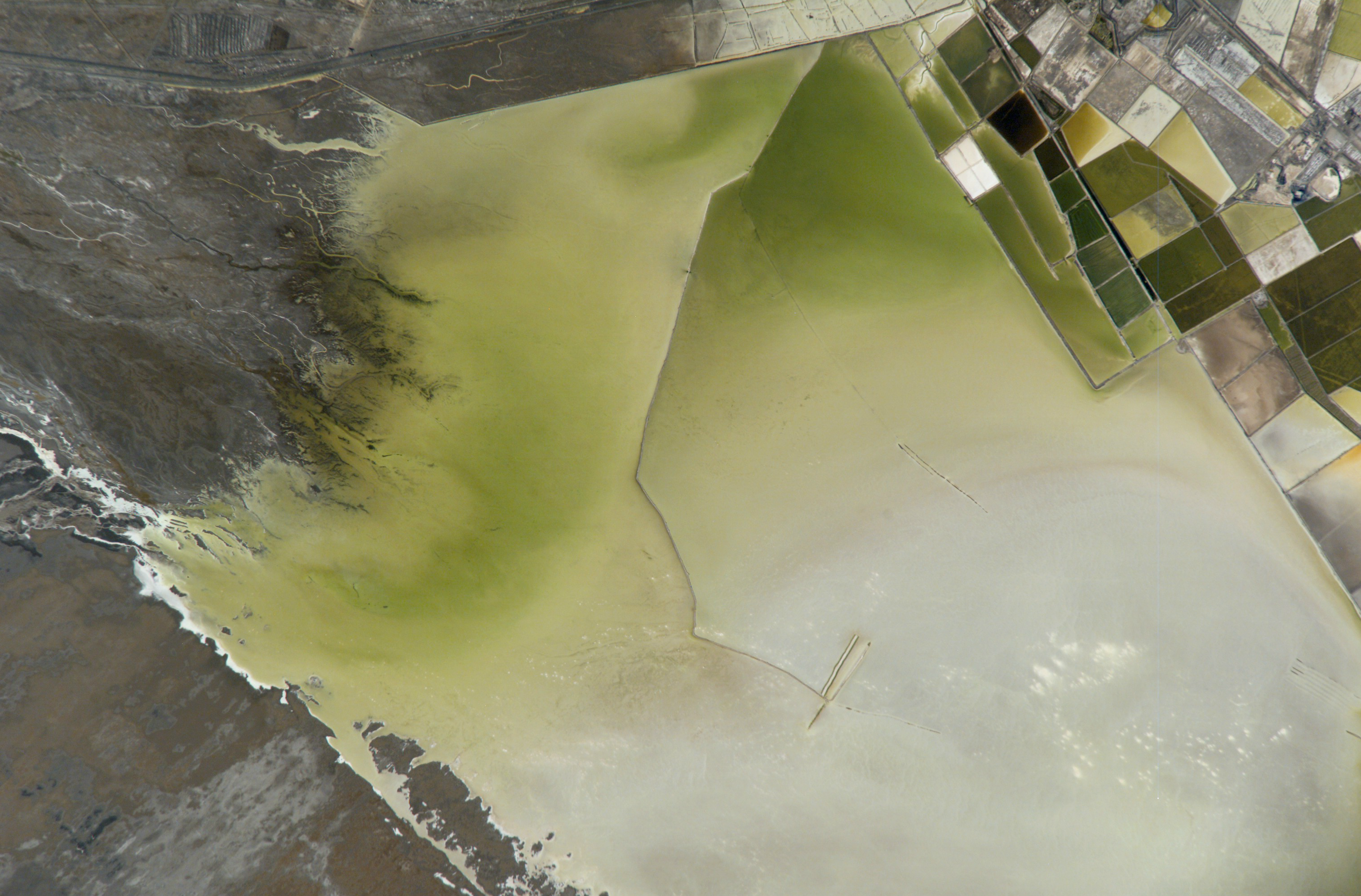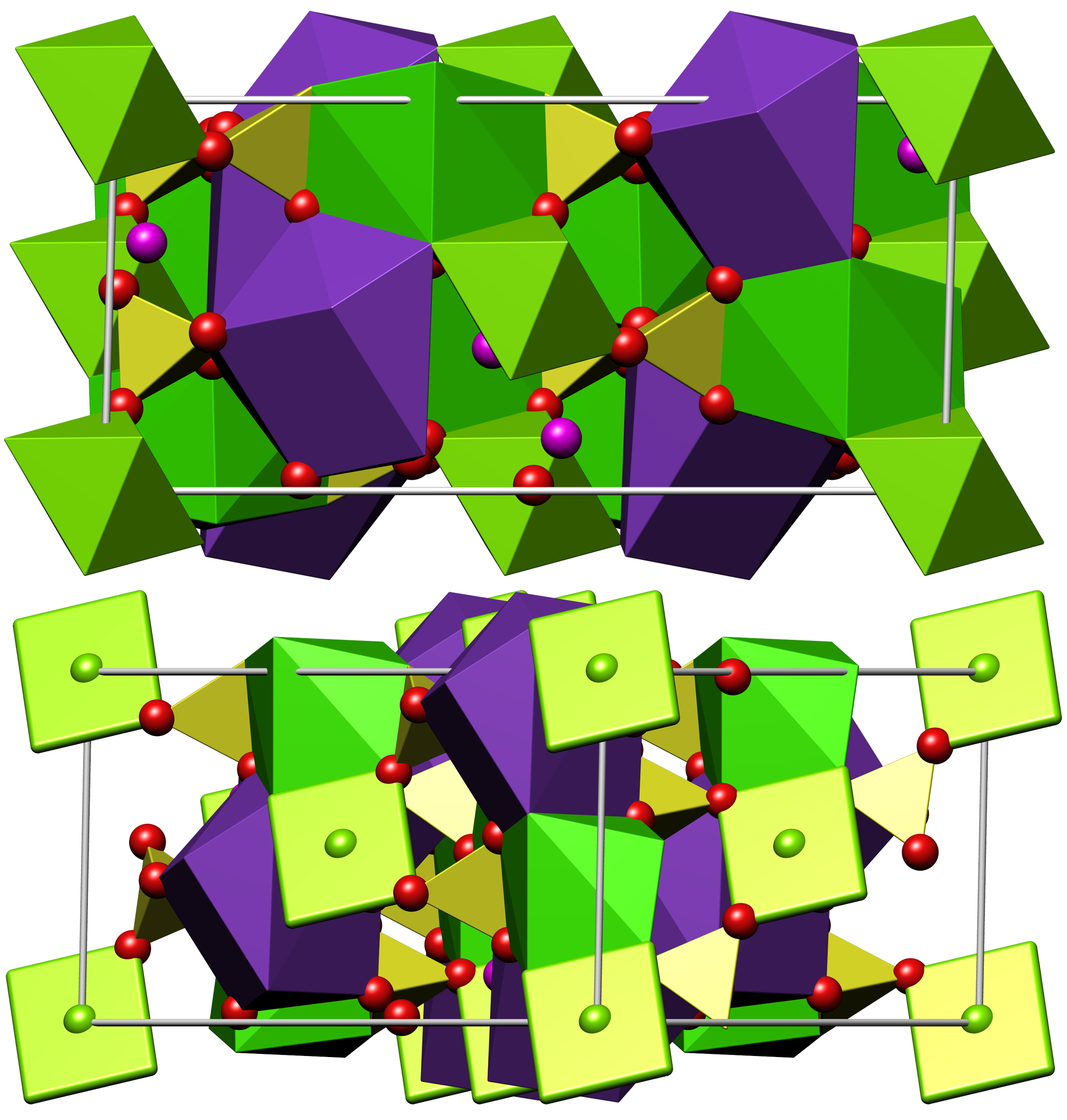|
Tuanjie Lake
Tuanjie Lake is a lake in the southeastern Qarhan Playa north of Golmud in the Haixi Prefecture of Qinghai Province in northwestern China. It is fed from the south by the Shougong River. Like the other lakes of the surrounding Qaidam Basin, it is extremely saline. Geography Tuanjie Lake at the southern edge of the Qaidam subbasin in the eastern Qarhan Playa at an elevation of above sea level. It has an area of . It lies southeast of Dabusun Lake, south of Xiezuo Lake, and west of South Hulsan Lake and is fed by the intermittent stream of the Shougong River ''Shōugōng Hé''). Its depth usually does not exceed . Tuanjie's position at the south end of the playa means that its waters are relatively less influenced by the concentrated mineral springs along the playa's northern boundary. Nonetheless, the lake's brine is at or near saturation with calcite, halite, polyhalite, kieserite, and (importantly) carnallite, which is processed to produce potash for potassium-rich ... [...More Info...] [...Related Items...] OR: [Wikipedia] [Google] [Baidu] |
Subbasin
A subbasin or sub-basin is a structural geologic Geology () is a branch of natural science concerned with Earth and other astronomical objects, the features or rocks of which it is composed, and the processes by which they change over time. Modern geology significantly overlaps all other Eart ... feature where a larger basin is divided into a series of smaller basins with intervening intrabasinal highs. The term subbasin has common use in geologic literature, but has yet to be included in the API Glossary of Geology.Neuendorf, K.K.E., Mehl, J.P. Jr., and Jackson, J.A., eds. (2011). Glossary of Geology, Fifth Edition, Revised. American Geological Institute, Alexandria, VA. References Depressions (geology) Geology terminology {{Geology-stub ... [...More Info...] [...Related Items...] OR: [Wikipedia] [Google] [Baidu] |
Potassium
Potassium is the chemical element with the symbol K (from Neo-Latin ''kalium'') and atomic number19. Potassium is a silvery-white metal that is soft enough to be cut with a knife with little force. Potassium metal reacts rapidly with atmospheric oxygen to form flaky white potassium peroxide in only seconds of exposure. It was first isolated from potash, the ashes of plants, from which its name derives. In the periodic table, potassium is one of the alkali metals, all of which have a single valence electron in the outer electron shell, that is easily removed to create an ion with a positive charge – a cation, that combines with anions to form salts. Potassium in nature occurs only in ionic salts. Elemental potassium reacts vigorously with water, generating sufficient heat to ignite hydrogen emitted in the reaction, and burning with a lilac- colored flame. It is found dissolved in sea water (which is 0.04% potassium by weight), and occurs in many minerals such as orthoclase, ... [...More Info...] [...Related Items...] OR: [Wikipedia] [Google] [Baidu] |
Potash
Potash () includes various mined and manufactured salts that contain potassium in water-soluble form.Potash USGS 2008 Minerals Yearbook The name derives from ''pot ash'', plant ashes or soaked in water in a pot, the primary means of manufacturing potash before the . The word '''' is derived from ''potash''. Potash is produced worldwide in amounts exceeding 90 million |
Carnallite
Carnallite (also carnalite) is an evaporite mineral, a hydrated potassium magnesium chloride with formula KMgCl3·6(H2O). It is variably colored yellow to white, reddish, and sometimes colorless or blue. It is usually massive to fibrous with rare pseudohexagonal orthorhombic crystals. The mineral is deliquescent (absorbs moisture from the surrounding air) and specimens must be stored in an airtight container. Carnallite occurs with a sequence of potassium and magnesium evaporite minerals: sylvite, kainite, picromerite, polyhalite, and kieserite. Carnallite is an uncommon double chloride mineral that only forms under specific environmental conditions in an evaporating sea or sedimentary basin. It is mined for both potassium and magnesium and occurs in the evaporite deposits of Carlsbad, New Mexico; the Paradox Basin in Colorado and Utah; Stassfurt, Germany; the Perm Basin, Russia; and the Williston Basin in Saskatchewan, Canada. These deposits date from the Devonian through the ... [...More Info...] [...Related Items...] OR: [Wikipedia] [Google] [Baidu] |
Kieserite
Kieserite, or magnesium sulfate monohydrate, is a hydrous magnesium sulfate mineral with formula (MgSO4·H2O). It has a vitreous luster and it is colorless, grayish-white or yellowish. Its hardness is 3.5 and crystallizes in the monoclinic crystal system. Gunningite is the zinc member of the kieserite group of minerals. Etymology It is named after Dietrich Georg von Kieser (Jena, Germany 1862) Occurrence Kieserite commonly occurs in marine evaporites and rarely in volcanic environments as a sublimate. It occurs in association with halite, carnallite, polyhalite, anhydrite, boracite, sulfoborite, leonite, epsomite and celestine. Mars In early 2005, Mars Express, a European Space Agency orbiter, discovered evidence of kieserite in patches of Valles Marineris (the largest canyon on Mars), along with gypsum and polyhydrated sulfates. This is direct evidence of Mars's watery past and augments similar discoveries made by the Mars Exploration Rover Opportunity in 2004. Moons of ... [...More Info...] [...Related Items...] OR: [Wikipedia] [Google] [Baidu] |
Polyhalite
Polyhalite is an evaporite mineral, a hydrated sulfate of potassium, calcium and magnesium with formula: . Polyhalite crystallizes in the triclinic system, although crystals are very rare. The normal habit is massive to fibrous. It is typically colorless, white to gray, although it may be brick red due to iron oxide inclusions. It has a Mohs hardness of 3.5 and a specific gravity of 2.8. It occurs in sedimentary marine evaporites and is a major potassium ore mineral in the Carlsbad deposits of New Mexico. It is also present as a 2–3% contaminant of Himalayan salt. Polyhalite was first described in 1818 for specimens from its type locality in Salzburg, Austria. The name comes from the German ''Polyhalit'', which comes from the Ancient Greek words (''polys'') and ' (''hals''), which mean "many" and "salt", and the German ending ''-it'' (which comes from the Latin ending -ites, which originally also came from Greek), which is used like the English ending ''-ite'' to form the nam ... [...More Info...] [...Related Items...] OR: [Wikipedia] [Google] [Baidu] |
Halite
Halite (), commonly known as rock salt, is a type of salt, the mineral (natural) form of sodium chloride ( Na Cl). Halite forms isometric crystals. The mineral is typically colorless or white, but may also be light blue, dark blue, purple, pink, red, orange, yellow or gray depending on inclusion of other materials, impurities, and structural or isotopic abnormalities in the crystals. It commonly occurs with other evaporite deposit minerals such as several of the sulfates, halides, and borates. The name ''halite'' is derived from the Ancient Greek word for "salt", ἅλς (''háls''). Occurrence Halite dominantly occurs within sedimentary rocks where it has formed from the evaporation of seawater or salty lake water. Vast beds of sedimentary evaporite minerals, including halite, can result from the drying up of enclosed lakes and restricted seas. Such salt beds may be hundreds of meters thick and underlie broad areas. Halite occurs at the surface today in playas in regio ... [...More Info...] [...Related Items...] OR: [Wikipedia] [Google] [Baidu] |
Calcite
Calcite is a Carbonate minerals, carbonate mineral and the most stable Polymorphism (materials science), polymorph of calcium carbonate (CaCO3). It is a very common mineral, particularly as a component of limestone. Calcite defines hardness 3 on the Mohs scale of mineral hardness, based on Scratch hardness, scratch hardness comparison. Large calcite crystals are used in optical equipment, and limestone composed mostly of calcite has numerous uses. Other polymorphs of calcium carbonate are the minerals aragonite and vaterite. Aragonite will change to calcite over timescales of days or less at temperatures exceeding 300 °C, and vaterite is even less stable. Etymology Calcite is derived from the German ''Calcit'', a term from the 19th century that came from the Latin word for Lime (material), lime, ''calx'' (genitive calcis) with the suffix "-ite" used to name minerals. It is thus etymologically related to chalk. When applied by archaeology, archaeologists and stone trade pr ... [...More Info...] [...Related Items...] OR: [Wikipedia] [Google] [Baidu] |
Solubility
In chemistry, solubility is the ability of a substance, the solute, to form a solution with another substance, the solvent. Insolubility is the opposite property, the inability of the solute to form such a solution. The extent of the solubility of a substance in a specific solvent is generally measured as the concentration of the solute in a saturated solution, one in which no more solute can be dissolved. At this point, the two substances are said to be at the solubility equilibrium. For some solutes and solvents, there may be no such limit, in which case the two substances are said to be " miscible in all proportions" (or just "miscible"). The solute can be a solid, a liquid, or a gas, while the solvent is usually solid or liquid. Both may be pure substances, or may themselves be solutions. Gases are always miscible in all proportions, except in very extreme situations,J. de Swaan Arons and G. A. M. Diepen (1966): "Gas—Gas Equilibria". ''Journal of Chemical Physics'', ... [...More Info...] [...Related Items...] OR: [Wikipedia] [Google] [Baidu] |
Mineral Spring
Mineral springs are naturally occurring springs that produces hard water, water that contains dissolved minerals. Salts, sulfur compounds, and gases are among the substances that can be dissolved in the spring water during its passage underground. In this they are unlike sweet springs, which produce soft water with no noticeable dissolved gasses. The dissolved minerals may alter the water's taste. Mineral water obtained from mineral springs, and the precipitated salts such as Epsom salt have long been important commercial products. Some mineral springs may contain significant amounts of harmful dissolved minerals, such as arsenic, and should not be drunk. Sulfur springs smell of rotten eggs due to hydrogen sulfide (H2S), which is hazardous and sometimes deadly. It is a gas, and it usually enters the body when it is breathed in. The quantities ingested in drinking water are much lower and are not considered likely to cause harm, but few studies on long-term, low-level exposu ... [...More Info...] [...Related Items...] OR: [Wikipedia] [Google] [Baidu] |
South Hulsan Lake
South or also known by other names, is a lake northeast of Golmud in Dulan County, Haixi Prefecture, Qinghai Province, China. A part of the Qarhan Playa, it lies east of Tuanjie Lake and south of North Hulsan Lake. Like the other lakes of the surrounding Qaidam Basin, it is extremely saline. Name ''Hulsan'' or ''Hollusun Nor'' is a romanization of a Mongolian name meaning "Reed Lake", from their former abundance in the area. The adjective "south" distinguishes it from nearby North Hulsan Lake. ''Huoluxun'' and ''Huobuxun'' are the pinyin romanizations of the Mandarin pronunciation of the same name's transcriptions into Chinese characters. ''Nan Hulsan'' or ''Nanhuobuxun'' is the same name, prefixed with the Chinese word for "South". Geography South Hulsan Lake lies in the southern Hulsan subbasin at the eastern edge of the Qarhan Playa in the southeastern corner of the Qaidam Basin at an elevation of . It lies east of Tuanjie Lake and south of North Hulsan Lake. It ... [...More Info...] [...Related Items...] OR: [Wikipedia] [Google] [Baidu] |







.jpg)